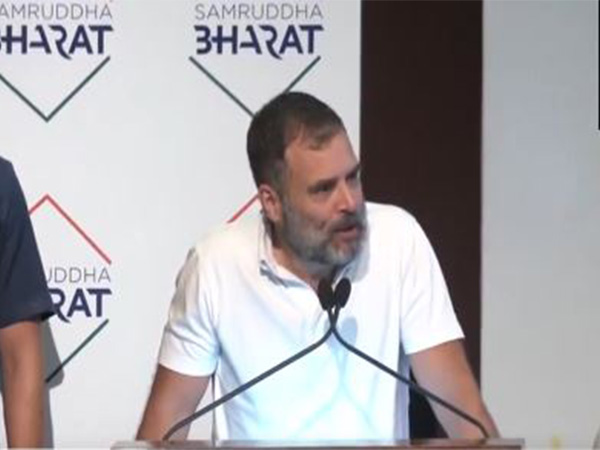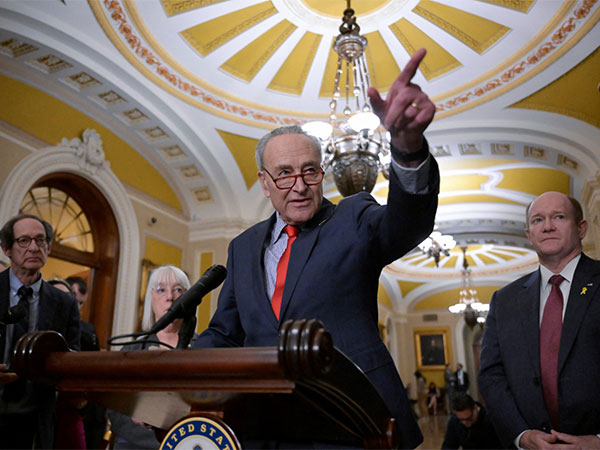The opening of two new air routes, with flight paths near two outlying islands controlled by Taiwan, is the latest move by China to up the pressure on Taiwan ahead of the swearing-in of the president-elect, Lai Ching-te, Voice of America reported, citing several analysts.
Lai, a member of Taiwan’s pro-sovereignty Democratic Progress Party, was elected in January and will be sworn into office on May 20.
Su Tzu-yun, a military analyst at the Taipei-based Institute for National Defense and Security Research, says Beijing has been using a combination of cognitive warfare, economic coercion, and gray zone operation measures against Taiwan. Gray zone operations involve using irregular tactics without resorting to open combat.
“China’s latest efforts to increase pressure on Taiwan is both part of its pressure campaign against Taipei and its response to recent international support for Taiwan, such as the reiteration of maintaining the peace and stability across the Taiwan Strait by the US, Japan, and other G7 countries,” Su said.
In a statement on April 19, China’s civil aviation regulator announced it had started using two west-to-east flight paths from the coastal cities of Xiamen and Fuzhou. The new air routes, known as W122 and W123, will connect to what is called the M503 air route, and they will operate alongside existing flight paths to the Taiwanese islands Kinmen and Matsu, which operate regular flights to and from Taiwan’s main island.
The M503 route runs alongside the median line of the Taiwan Strait, which once served as an unofficial border between China and Taiwan.
China’s Civil Aviation Administration added that Beijing also plans to “further optimize” the airspace around Fuzhou airport in the southern Fujian Province starting May 16, four days before Lai’s inauguration, VOA reported.
Notably, shortly after Lai won the elections in January, Beijing unilaterally cancelled flight paths for the M503 route and opened new west-to-east air routes from three coastal cities.
Beijing views Lai as an advocate of Taiwan’s independence. China claims Taiwan is part of its territory and has not ruled out the use of force to unite the island with the mainland.
Responding to Chia’s announcement, Taiwan’s Civil Aviation Administration said Beijing’s decision could create serious flight safety risks since the distance between China and Taiwan flight paths is only two kilometres (1.1. nautical miles) at its nearest point. Taipei says it will demand that any aircraft using the new air routes turn back.
China’s Taiwan Affairs Office, which oversees cross-strait relations, said Taipei’s criticism is “a malicious hype” aimed to “create an illusion” that Beijing is “squeezing its space.
Since the new air routes initiated by Beijing runs very close to the median line of the Taiwan Strait, some experts say China is trying to redefine the status quo across the Taiwan Strait based on its terms, the report further stated.
The median line has served as an unofficial demarcation between Taipei and Beijing for decades. China and Taiwan split amid a civil war in 1949.
The decision to unilaterally initiate new air routes “is part of Beijing’s attempt to demonstrate that it sets the rules in what it regards as its internal matters,” according to J Michael Cole, a Taipei-based senior adviser with the International Republican Institute’s Countering Foreign Authoritarian Influence team.
Cole said that when the M503 air route was first announced in 2015, Beijing agreed to adjust flight paths following negotiations with the Taiwanese government under the China-friendly Kuomintang, or KMT party.
“Beijing moved away from unilateralism after protests by Taipei and after negotiations with the KMT-led government,” he stated.
However, as Taiwan prepares to inaugurate the third consecutive administration under the Democratic Progressive Party next month, Cole said Beijing “is no longer in the mood for negotiation and is unilaterally implementing flight paths.”
“It denies Taiwan’s agency by refusing to negotiate with Taipei,” he added.
The report further cited military analysts who believe that Beijing’s decision to start using the contested air routes could increase the likelihood of Chinese civilian aircraft flying to the east side of the Taiwan Strait median line, where there are four designated no-fly zones.
“Taiwan’s Air Force uses those no-fly zones to monitor activities in the airspace along the median line of the Taiwan Strait,” said Chieh Chung, a military researcher at Taiwan’s National Policy Foundation.
In his view, Beijing’s new flight paths would increase the difficulty for the Taiwanese Air Force to track activities by Chinese civilian or military aircraft in the no-fly zones.
“China is trying to use the frequent incursion of Chinese civilian aircraft into the no-fly zones designated by the Taiwanese government to challenge the rules set by Taipei,” he told VOA by phone.
In addition to opening new air routes and announcing new trade measures against Taiwanese imports, Beijing increased the number of military aircraft it deployed to areas near Taiwan over the weekend.
Meanwhile, Taiwan’s defence ministry said it detected 21 Chinese military aircraft and seven Chinese naval vessels operating around Taiwan between April 20 and April 21. At least 17 Chinese military aircraft crossed the median line of the Taiwan Strait, VOA reported.
With less than a month until the inauguration of Taiwan’s new government, some analysts believe Beijing’s pressure campaign will continue. Cole at the International Republican Institute says Taipei “must remain alert, retain the moral high ground, and avoid any form of activity that could be exploited by Beijing to justify retaliation.” (ANI)
For more details visit us: https://lokmarg.com/









